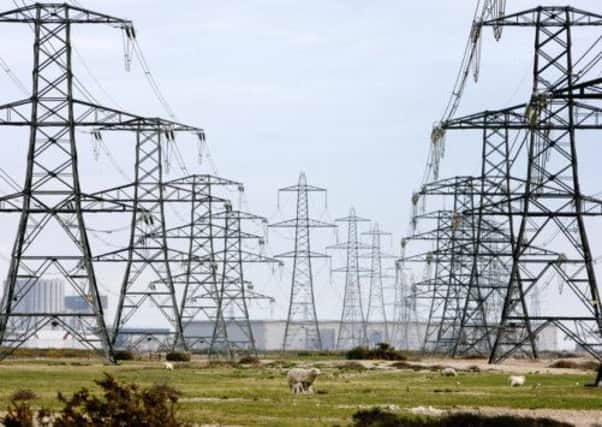Successful test drilling boosts prospects for carbon capture


The National Grid has successfully completed test drilling of a carbon dioxide storage site in the North Sea 40 miles off the Yorkshire coast.
The company now says that early indications are that the undersea location is viable for storage and could hold up to 200 million tonnes – the equivalent of taking 10 million cars off the road for 10 years.
Advertisement
Hide AdAdvertisement
Hide AdThe site is near several power stations, oil refineries and industrial plants which create about a 10th of the UK’s carbon dioxide emissions.
The successful drilling, believed to be the first done for a carbon storage site in Europe, is set to place Yorkshire at the forefront of this new industry.
It follows the revelation that a scheme to build the UK’s first-ever “clean coal” power station in Yorkshire is poised to win hundreds of millions of pounds from Europe after it emerged as the only entrant in the EU’s green energy funding competition.
Drax power station near Selby is likely to secure a grant worth up to £300m, after the European Commission announced the “White Rose” project is the sole bidder in its competition to help develop carbon capture and storage.
Advertisement
Hide AdAdvertisement
Hide AdCarbon Capture is an emerging technology which involves siphoning off the carbon dioxide (CO2) from heavy industrial sites before it is released into the atmosphere. The CO2 is sent down pipelines and buried deep beneath the ground, where scientists believe it can be stored for thousands of years.
The National Grid’s testing work is being done separately to the bid for a new clean coal power station but the two schemes give the region the potential to help create a network for carbon capture and storage.
Commenting on the drilling Peter Boreham, National Grid’s director of European business development, said: “Global energy demand is likely to double in the next 20 years and carbon capture and storage is the only technology that can turn high-carbon fuels into genuinely low-carbon electricity and keep costs low for consumers. Drilling is part of a programme which confirms our confidence that carbon capture and storage will be a practical part of tomorrow’s energy mix.
“Within Europe, the UK is in a good position to lead on carbon capture and storage, with clusters of industry and power stations that are near to large storage sites like this one in the North Sea.
Advertisement
Hide AdAdvertisement
Hide Ad“Progress has been supported by an EU grant and this will enable further analysis on the samples we’ve collected.”
The National Grid said it would use its expertise in developing gas pipelines to create a network to transport carbon dioxide to a storage site.
The White Rose project involves constructing a new coal-fired power station at Drax’s existing site, with its carbon emissions transported across Yorkshire in underground pipelines and stored in depleted oil and gas fields beneath the North Sea bed.
It is believed more than 1,000 jobs would be created during the construction of the power station, which would produce enough electricity to power every home in North and East Yorkshire.
Advertisement
Hide AdAdvertisement
Hide AdDespite being the EU competition’s only entrant, however, the White Rose is still not certain to win the grant, as the EU insists all projects must secure match-funding from their own national governments. The Chancellor of the Exchequer, George Osborne, announced in March that the White Rose project, and another scheme in Scotland, have been shortlisted to win support from the UK’s own £1bn carbon capture funding competition.
However, the Department for Energy and Climate Change (DECC) wants detailed planning work done on both projects before agreeing to take them forward – a process which is expected to take around 18 months.
If the EU is not satisfied with the guarantees of match-funding later this year, the money Brussels has set aside for carbon capture and storage schemes may be spent on other renewable energy projects instead.